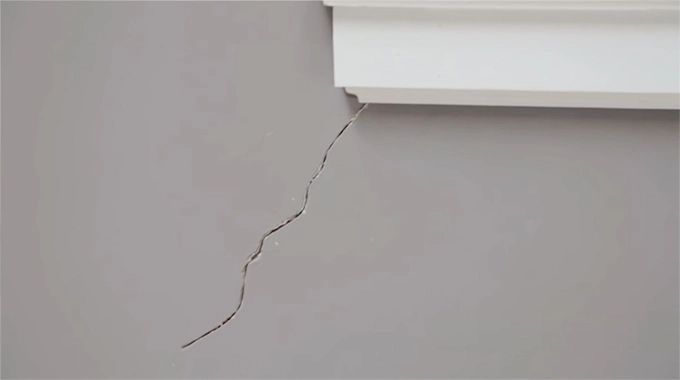Last Updated on January 25, 2023
As the temperature dips, homeowners want to be sure their drywall is safe and sound. But when it comes to cold weather conditions, one question keeps popping up: Does drywall crack in cold weather?
On those oh-so-chilly days, make sure you don’t forget to wrap your drywalls in warmth. When temperatures dip below 40ºF (5ºC), drywall can become vulnerable to cracking due to its gypsum core expanding and contracting with changes in temperature.
Protecting the walls from these fluctuations is key, or else they could start showing unsightly cracks along seams or corners. Prepare your walls for winter with some simple construction steps. Insulate them during the build and make sure to mend any fissures before the chill sets in.
This post takes you through everything you need to know about protecting your drywalls against frigid temperatures.
Why Does Drywall Crack in Cold Weather: Reasons Explained
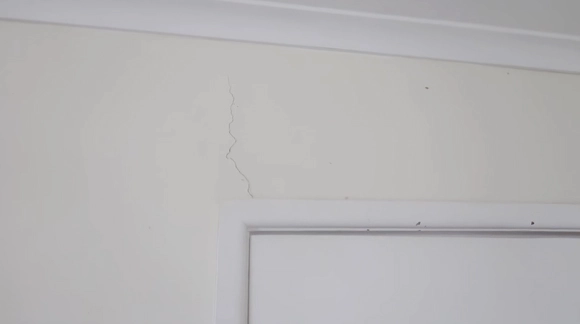
1. Shrinkage of Materials:
Cold weather can cause materials to shrink and expand, which can lead to drywall cracks. During colder months, many constructions and insulation materials, such as gypsum board, contract due to the low temperatures and humidity levels.
This low temperature creates tension on the drywall surface, which can contribute to the formation of cracks and other damage.
Additionally, some materials used in drywall construction may have different coefficients of thermal expansion than others in order to fit specific structural needs. When these are exposed to colder temperatures, they may expand at different rates, further exacerbating existing tensions that may lead to cracking.
2. Moisture and Condensation:
Another potential reason for drywall cracks in cold weather is related to moisture buildup inside walls.
Due to air-saturated vapors passing from indoors where temperatures are higher, wall cavities exposed to colder temperatures will often experience higher condensation levels. Condensation can wet wall surfaces, causing swelling, softening, and eventual cracking or bubbling of drywall.
Furthermore, poorly insulated walls not only make your home feel cooler, but they can also provide a damp entryway for excess moisture. This unwelcome moisture will cause further damage if left unchecked.
3. Unstable Indoor Temperatures:
Due to unstable indoor temperatures or sudden changes in temperature cycles, drywall can crack in a home’s interior environment.
The rapid fluctuation of indoor temperatures can create tension on walls that were either inadequately insulated beforehand or unintentionally left exposed by design flaws. After enough repeated exposure to rapid temperature changes, these areas can develop small stress fractures along the wall surface.
4. Soil Movement:
Soil movement occurring underneath a building’s foundation can also lead to cracks appearing on drywall surfaces located above ground level. As soils shift beneath a structure’s frame, they create pressure which is then transferred upwards onto any structure built above such soil.
Because drywall walls are relatively thin compared to other types of walls constructed inside homes and buildings, this pressure creates tension within those structures.
Common Types of Drywall Cracks Caused by Cold Weather
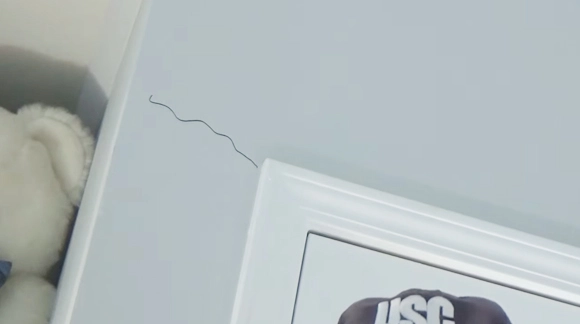
1. Hairline Cracks:
Tiny hairline cracks in drywall can be caused by cold weather and inadequate insulation. This type of crack is usually thin and located near windows, ceiling or wall corners, or near the ceiling above doors. In most cases, these hairline cracks are too small to require paint or prime, but they can still be unsightly.
2. Horizontal Cracks:
Horizontal cracks in drywall are caused when there is excessive moisture due to cold temperatures. When moisture builds up behind the drywall, it expands the material and causes a horizontal crack to form along one side of the wall or ceiling surface.
This type of crack may also be accompanied by water damage on drywall paper that appears as brown discoloration around the edges of the crack. In some cases, horizontal cracking may indicate a structural problem with the building itself, such as an improperly installed beam.
3. Vertical Cracks:
Cold weather can also cause vertical cracks in drywall due to thermal expansion and contraction caused by changing temperatures. These cracks are typically more visible than others because they usually occur at corners where two pieces of drywall meet or along joints of existing seams.
Vertical cracks may appear along wall-to-ceiling junctions or at points where no reinforcing was used during installation, such as door frames and window sills. In some cases, vertical cracks form around electrical boxes on walls due to thermal expansion from heating devices installed there, such as light switches or outlets.
This type of cracking can be big if improper installation techniques are used, such as not using enough adhesive when applying drywall mud or tape.
4. Stair-Step Cracking Along Corners or Edges:
Stair-step cracking can occur in cold weather when temperatures drop drastically overnight, causing excess moisture to accumulate between drywall panels or walls and ceilings. Drafts from outside sources can also be a problem if there is inadequate insulation between surfaces.
These types of cracks form a series of steps along walls and create an unpleasant aesthetic effect on any room’s interior design appeal.
Prevention Steps for Avoiding Drywall Cracking in Cold Weather
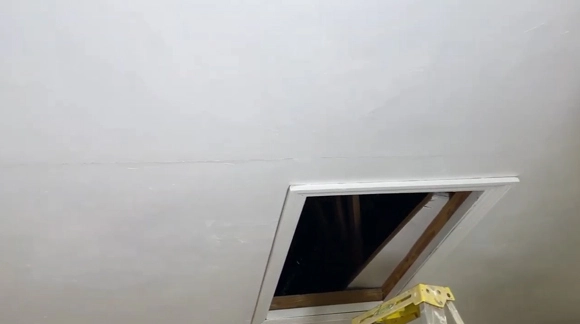
1. Use High-Grade Materials:
Using high-grade materials and power tools for the drywall is the most important step in avoiding cracking in cold weather. It is essential to use moisture-resistant gypsum board, polyurethane foam or fiberglass insulation with a vapor barrier, and exterior sheathing on all exterior walls.
These materials are designed to withstand extreme temperatures without cracking or sagging. Additionally, they are often treated with waterproof priming or coating to further protect them against moisture damage.
2. Seal Drywalls if Cracks Appear:
You can seal cracks in drywall with caulk or cementitious materials like epoxy resin or silicone sealant. These products are designed specifically for sealing small cracks that may appear due to changes in temperature.
Remove dirt, debris, and any other foreign matter from the area around the crack before applying the sealant. When properly applied, these products will prevent further moisture infiltration into wall cavities and reduce the risk of cracking.
3. Seal Air Leaks Around Windows and Doors:
Stopping air leaks around doors and windows is an essential step in preventing drywall from cracking due to cold weather conditions. To prevent these air leaks, all gaps should be caulked with a durable sealant rated for exterior use, such as silicone caulk.
Using expanding foam insulation spray canisters, you can fill larger openings around window frames and door jambs, reducing energy loss while reducing drywall damage caused by cold weather conditions.
4. Install Proper Insulation:
Your home’s walls, ceilings, and floors should be properly insulated with high quality fiberglass, mineral wool, cellulose, and natural fibers to ensure that they stay at a consistent temperature throughout the year.
You should use the right type of insulation for each area of your home, as each area requires a different type of insulation based on its location and purpose. During winter months, properly installed insulation protects against heat loss while reducing sound transmission between rooms.
5. Regularly Monitor Humidity Levels Inside Home:
Homeowners should monitor humidity levels regularly as high humidity can cause the drywall to expand and crack over time due to excess moisture build up within its material. Investing in a quality hygrometer can provide you with accurate readings for both temperature and humidity levels within your home.
Using a hygrometer, you will know when it’s time to open up some windows or turn on a dehumidifier if needed. By monitoring humidity levels frequently, you can avoid excessive expansion of drywall material during colder months when heaters are running daily inside your home.
5. Fix the Sagging Ceiling:
In cold climates, sagging ceilings due to incorrect installation or structural damage is a major cause of drywall cracking. In some cases, the work may involve tightening screws or nails, repairing beams and joists, or even replacing entire sections of drywall.
6. Seal Bowing Walls:
Bowing walls caused by moisture buildup can also lead to drywall cracking during cold weather. Check for visible signs of water damage or dampness along baseboards and wall corners and seal them off with caulk or epoxy fillers as soon as possible before more extensive damage occurs.
7. Seal Stucco if Cracked:
Stucco is another material that is prone to be damaged by extreme changes in temperature. Therefore, homeowners should seal any cracks in stucco exterior walls during cold weather with a quality masonry sealer that can prevent water penetration and freeze-thaw cycles.
8. Fix Roof Sag:
When a roof is not properly insulated, snow accumulates on it, causing stress on the drywall structure, causing cracking over time. Replace missing shingles or seal off gaps between roof trusses that have been affected by rainfall or snowfall if your roof shows signs of sagging.
Is It Normal for Drywall to Crack?
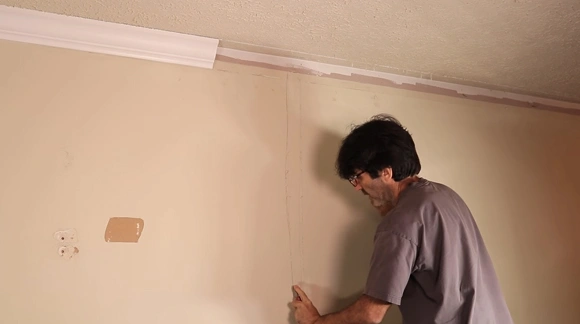
Cracking of drywall is relatively common, especially in climates with extreme temperature fluctuations and high humidity levels. Temperature and humidity changes often cause cracks between the framing material and the drywall itself.
Wood naturally expands and contracts due to changes in ambient temperature, while gypsum contained within drywall does not. Consequently, this causes stress on framing members, which can lead to cracks at angle joints or along seams between drywall sheets.
Additionally, when nails are used rather than screws, they may eventually come loose, leading to cracking or popping out of the sheetrock surface.
Is Drywall OK in an Unheated Garage?
Yes, drywall can generally be used in an unheated garage, but there are some caveats. In climates with extreme temperature swings and prolonged periods of cold temperatures, the drywall may expand and contract, causing cracking or sagging.
If moisture is present, it may cause mold or mildew on the wall surface. The drywall should be sealed with a vapor barrier paint if there won’t be insulation in the garage walls. Use screws that are long enough to penetrate into a wall stud so they won’t pull out due to thermal expansion.
How Much is Wall Cracking Acceptable?
In general, cracks up to 1/16 inch would likely be considered structurally damaging and would generally only warrant minor repairs. If there’s a crack larger than 1/16 inch, it can indicate an underlying problem like foundation movement.
Can You Mud and Tape when Drywall is Cold?

When taping and finishing drywall, ensure the interior temperature is kept at 50ºF (10ºC) or higher for a minimum of 48 hours. This time frame ensures that the gypsum board is completely dry before installation.
Also, apply a thin coat of primer on each patch before taping and filling in order to create a more even base layer for the drywall tape and mud mixture.
Keep Drywall Strong and Crack-free in Cold Weather
Drywall cracking due to cold weather can be a costly repair that every homeowner should be aware of. You can prevent cracked walls by keeping your house warm during colder months and keeping your drywall out of temperatures below 40ºF (5ºC).
If your walls have cracked due to cold weather, you can fix them yourself with the proper tools or hire an experienced contractor who knows how to fix this problem. Leaving your home’s drywall exposed to extreme temperatures for too long could result in much higher costs down the road.
Ultimately, understanding how low temperatures can affect your house will make you feel more confident that it will remain safe.
